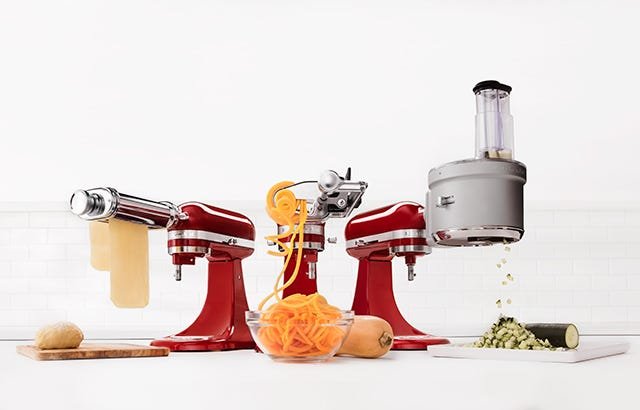Welcome back to TheKitchenApplianceDad.com, your go-to source for all things related to kitchen gadgets and their use. Today, we’re diving into the world of KitchenAid mixers to answer a frequently asked question: “Which KitchenAid parts are dishwasher safe?” Knowing how to properly clean and care for your KitchenAid mixer and its accessories is crucial for maintaining their longevity and performance. So let’s get started with our comprehensive guide.
KitchenAid stand mixers are a staple in many home kitchens, prized for their durability and versatility. These mixers come with a variety of attachments and accessories, each with its own cleaning instructions. To ensure you’re taking the best care of your mixer, it’s important to know which parts can go into the dishwasher and which should be hand-washed.
Most KitchenAid mixer bowls are dishwasher safe, especially the stainless steel bowls that come with many mixers. These can be placed on the top rack of the dishwasher. However, if you have a bowl with a painted design or a different finish, such as a ceramic or glass bowl, you’ll want to check the manufacturer’s recommendations to confirm if it’s dishwasher safe.
Many KitchenAid mixers come with a coated flat beater and dough hook, which are dishwasher safe. You can place these on the top rack of your dishwasher. However, the wire whip often has a burnished aluminum construction and should be hand-washed to avoid tarnishing.
If your KitchenAid mixer came with a pouring shield, this accessory is typically made of plastic and is dishwasher safe. You can place it on the top rack to prevent warping.
Some KitchenAid mixers come with burnished (uncoated) metal attachments, such as the flat beater, dough hook, and wire whip. These are not dishwasher safe and should be washed by hand with warm, soapy water to prevent tarnishing or oxidation.
Any attachments that incorporate wooden parts, like the handles of some accessories, should not be placed in the dishwasher. The high temperatures and prolonged exposure to water can cause wood to warp or crack.
Cleaning and caring for your KitchenAid mixer and its parts doesn’t have to be a chore. By understanding which components are dishwasher safe and which require a little extra handwashing, you can keep your mixer in tip-top shape, ready for your next culinary creation. Remember, the key to a long-lasting mixer is proper maintenance, and that includes knowing how to clean it correctly.
For more in-depth guidance on all your favorite kitchen appliances, stick with us here at TheKitchenApplianceDad.com. Whether you’re whipping up a storm or kneading dough for your famous bread, we’re here to help you make the most of your kitchen time.
External resources:
Key Takeaways:
By following this full guide on which KitchenAid parts are dishwasher safe, you’ll ensure your mixer continues to serve you well in all your baking and cooking endeavors. Keep your mixer clean, your ingredients fresh, and your recipes adventurous – happy mixing from all of us at TheKitchenApplianceDad.com!

